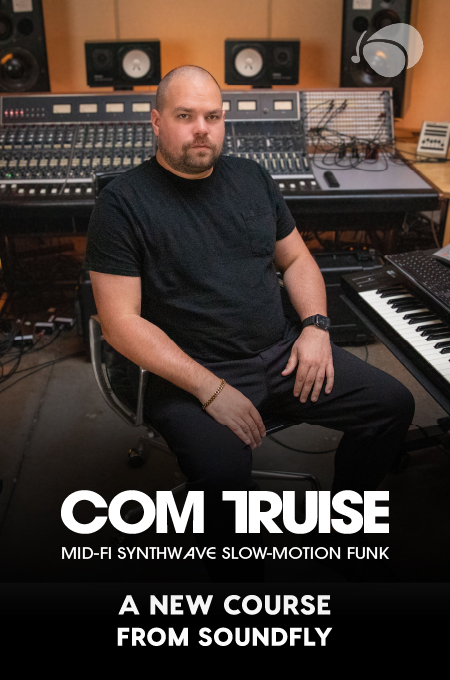+ Welcome to Soundfly! We help curious musicians meet their goals with creative online courses. Whatever you want to learn, whenever you need to learn it. Subscribe now to start learning on the ’Fly.
Have you ever wondered if there was some kind of magical formula to all those memorable Disney movie songs you grew up with? I always did, because they always stuck with me. So I finally decided to analyze the most popular Disney songs of all time — 70 to be exact (including hits like “Be Our Guest,” “Heigh Ho,” “The Bare Necessities,” “Can You Feel the Love Tonight?,” and so many others) — throwing all the data into spreadsheets, and comparing it across a range of metrics. I grabbed all of the songs’ chord types, tempos, meters, tessituras, and other statistics, and when the dust eventually settled, it revealed some pretty illuminating facts and figures!
For instance: Did you know that the most common tempo used in Disney songs is 106 BPM? Or that the most common modulation is up a major 2nd? Or that there were 8 diminished triads (out of only 12!) used more often than the familiar major diatonic viiº (seven diminished) chord?
When it comes to song form, Disney songs have more unique instrumental sections than any other type of section, including verses and choruses! If we take into account the fact that these songs are written for film, and therefore need to accommodate pacing and dialogue, catching up to the picture so to speak, it’s not actually that surprising that the composers would use instrumental passages to kill a few seconds here and there. I guess it’s also relevant that these songs can only be around 2 or 3 minutes long, since they eat up film-time, so there isn’t a lot of room for repeated choruses. In other words, Disney can’t really go Dylan.
Lastly, for now, there is an average of 8.5 different chord triad types used in each song — that’s not even including inversions, voicings, or colorings! These are not your average four-chord pop tune loops, people! Is your “inner geek” piqued? Then read on, for ten charts of Disney song stats just like these are to follow. Oh, and if you’re really jonesing for some Disney magic, you can check out this ultimate Disney song playlist while you read along.
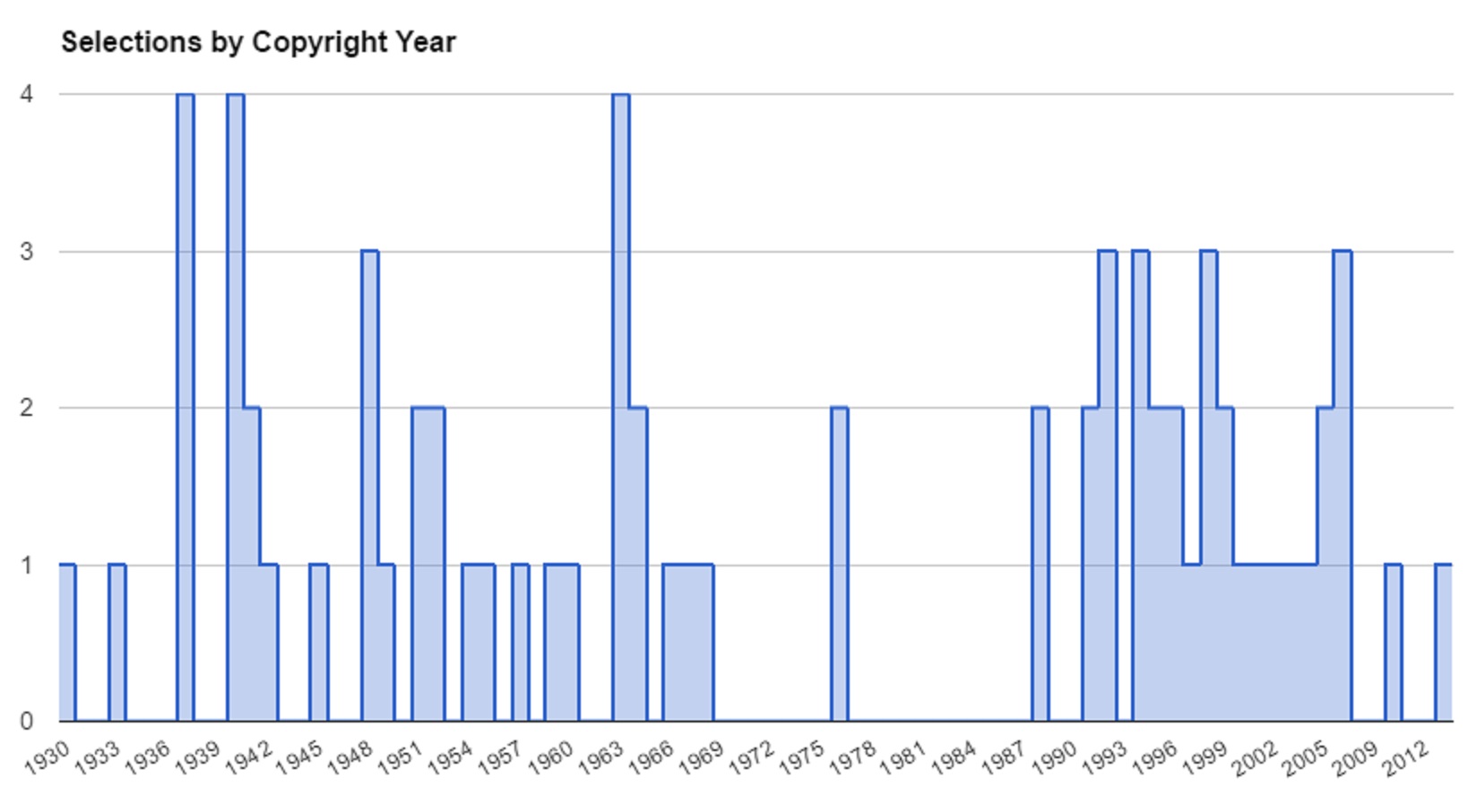
Our first graph gives us a little perspective on the timeline of the best Disney songs. The first thing you’ll see is that Disney didn’t put out a lot of good music in the ’70s and ’80s, probably because Walt died at the end of 1966. So, around then “Disney” went from meaning Walt Disney himself to the company tasked with extending his legacy, and I guess there were some growing pains. But after that, came the solid “Renaissance” block in the ’90s. Another gap of note is the break post-WWII, as Disney Studios focused more of their wartime production efforts on propaganda films and produced songs about Donald Duck throwing tomatoes at Hitler’s face, none of which, sorry in advance, made it into this study.
Moving on!
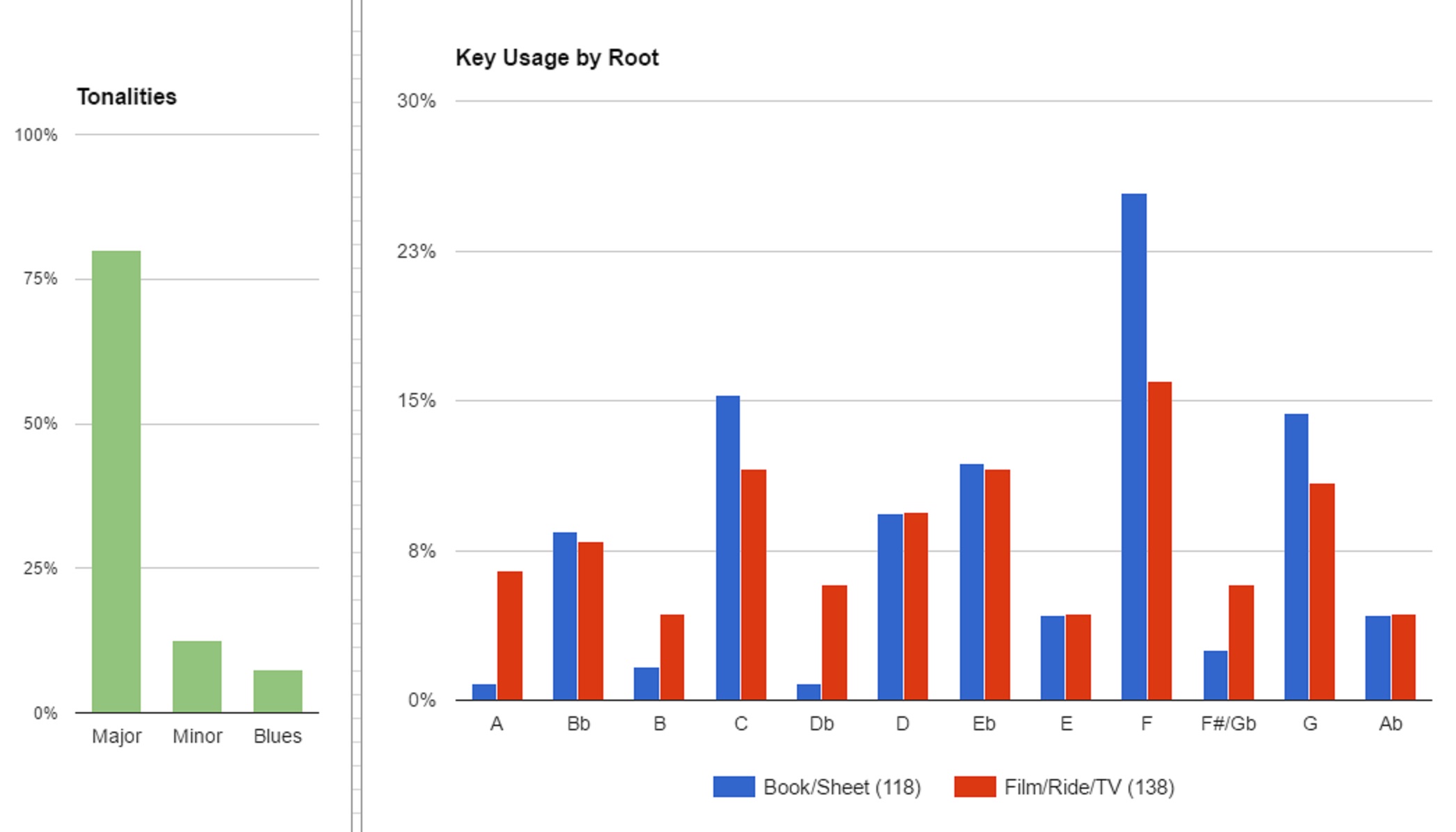
Our next graph shows key and tonality usage, where “major” is king with 80% of songs using it. Meanwhile, “minor” and “blues/rock” tonalities split a fifth between them. But this is no surprise when you remember that Disney produces mostly happy (major) music that uplifts the listener with hope, about things like princesses and their cuddly sidekicks, while tunes in minor or blues tonalities have historically tended to concern things like your lover cheating on you and your creditors confiscating your mule, and like, slavery. So there’s that.
However, what is also interesting to note, is that when the non-cuddly Disney characters get songs, they’re almost always in minor. What better way to create an emotional aversion to a sinister character than to score his point of view in minor! And as far as tonal centers go, you can see that, predictably, “sharps and flats” keys get the short end of the stick, but much more so when it came to the published versions of the songs as opposed to the film versions. For more on the individual keys of each song, I’ve published all of my statistics on my blog, so if you’re really looking for the nitty gritty of this study, head here.
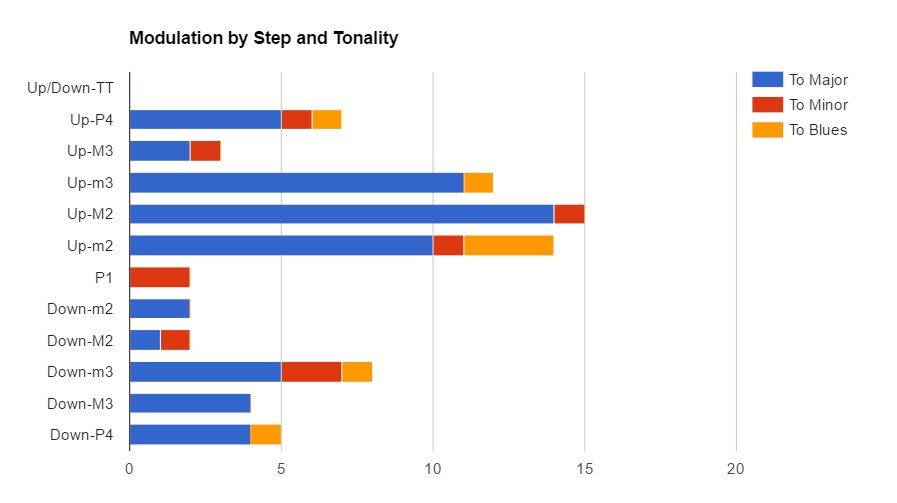
Key change! So, what we have here are directional motions down the left side, with the lowest bar tallying modulations down a perfect 4th, and the highest tallying modulations up a tritone. And the thing to notice here is that Disney songs like to modulate up short distances, also down a minor 3rd (also known as “relative modulations“), and up and down by perfect 4ths. What’s perhaps more interesting than the graph itself was the fact that, in this study, there were slightly more modulations than there were songs! The total tally was 73 modulations found in 70 songs! To quote famed musicologist Minnie Mouse, “If you’re not modulating in your songs, I don’t know what you’re doing!”
Next up we have vocal tessituras.
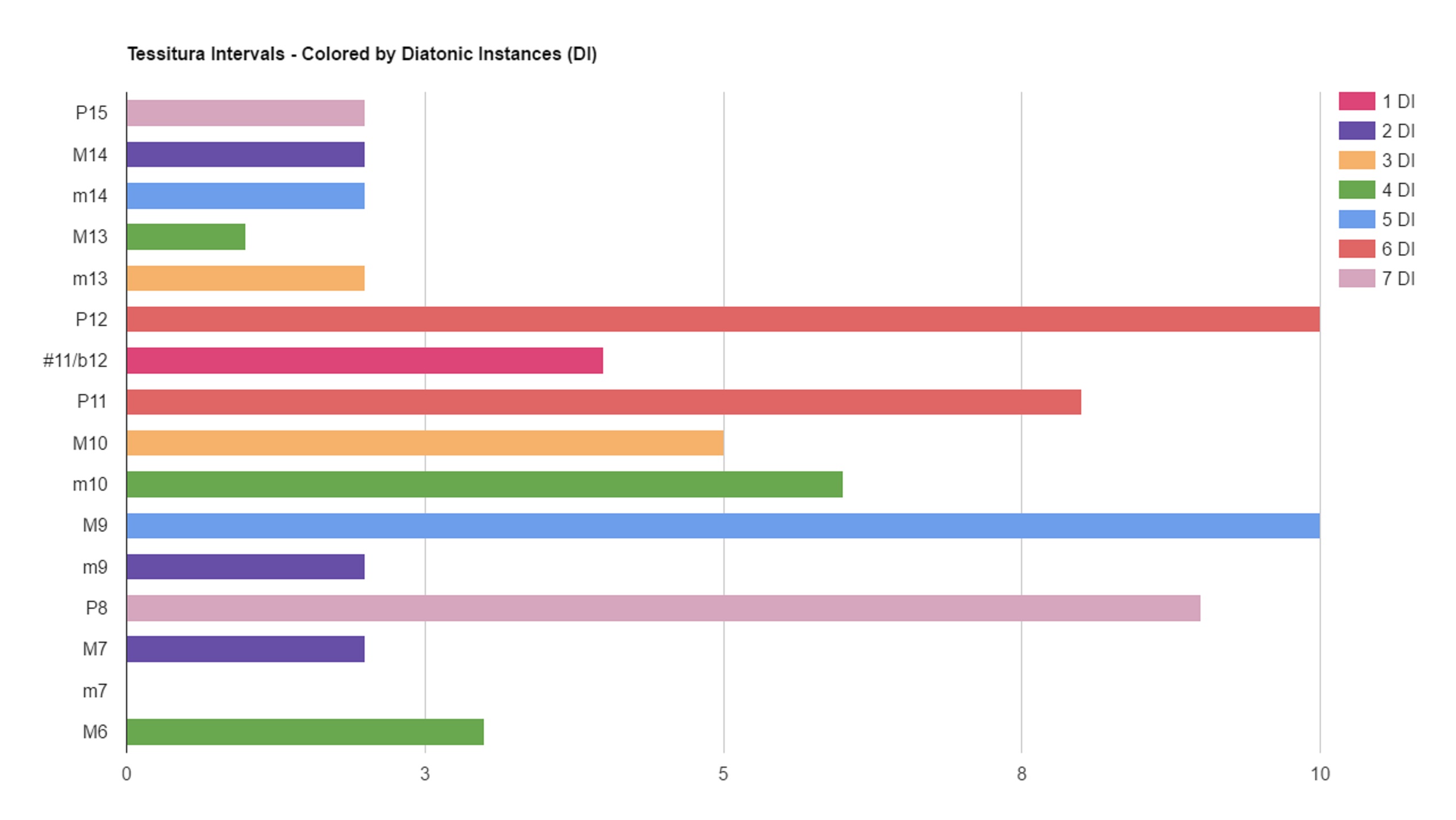
A “tessitura” is a range of melody, and what we see here is that most ranges were from an octave to a perfect 12, which I didn’t find to be all that interesting. So I decided to color-code by “diatonic instances” (a fancy way of saying how many times that interval can happen in a tonality) to make the graph look prettier. Analyze at your own risk.
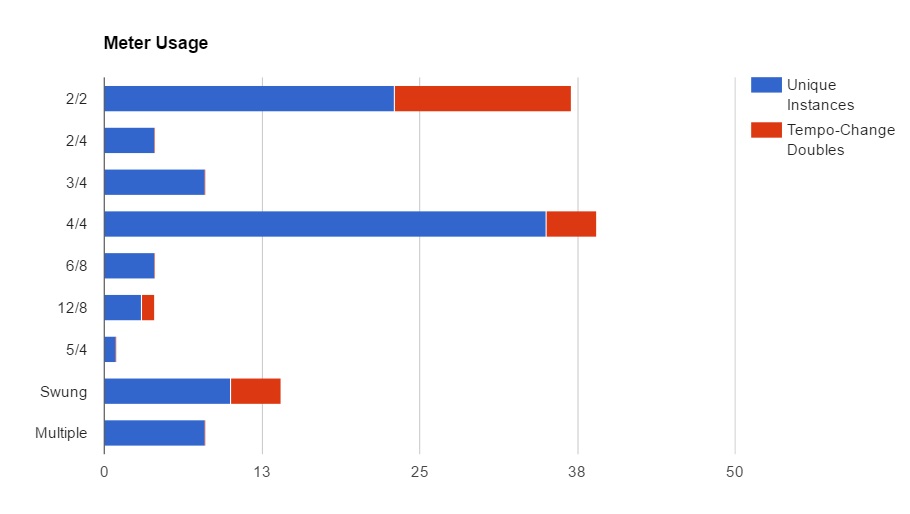
Next, let’s cover something for all the drummers reading this (are there drummers reading this? Please introduce yourself in the comments). The thing to notice about the meter usage chart isn’t the blue spike in 4/4 common time (that’s why they call it common time), but the big showing for songs in 2/2 cut time, and its big red appendage, which exemplifies how deeply fun it is to change tempos when you’re playing in two.
Also, 11% of songs used more than one meter, which should serve as a reminder that you’re allowed to do that when you write songs. Last, proportionally, swung songs seem to really like to change tempos as well.
+ Read more on Flypaper: “4 Tips to Help You Start Writing in Irregular Time Signatures”
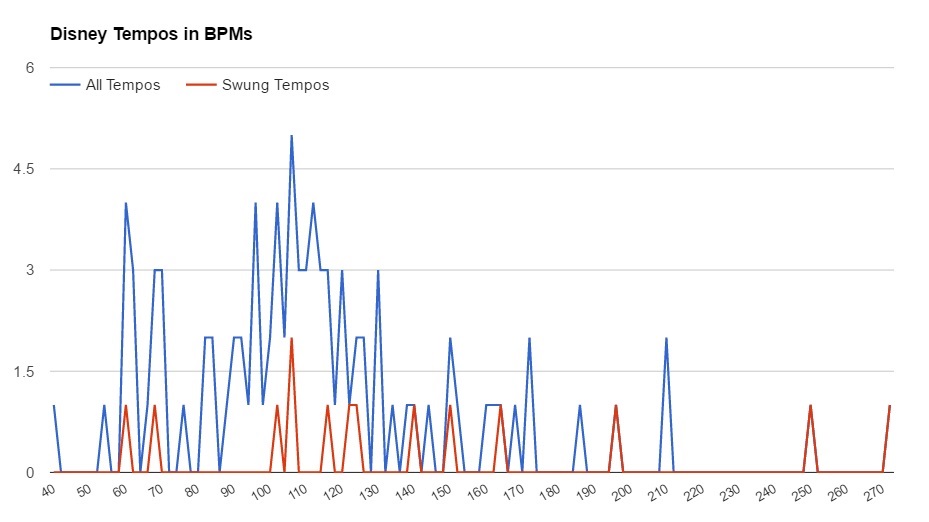
Speaking of tempos, here are all the BPMs graph-ified! We can see that the slow jams like it best in the 60s, with a relative dip in the 70s, and then the mountain range ranges from the 80s through the 130s, with some consistent showings through around 176 BPM, and then some faster blips.

Still with me? Awesome, gimme some knucks, geek-power!
Alright, above we have a graph that lays out song-form section usage. Now, there are a bunch of synonyms and ways I could have done this. That disclaimer out of the way, I divided songs up by (I)nstrumentals, (V)erses, (R)efrains, (P)re-choruses/interludes, (C)horuses, (B)ridges, (T)ags, and (O)utros, with the “numbers” referring to variations or new swaths of that same section type, and “lowercase” referring to shortened sections.
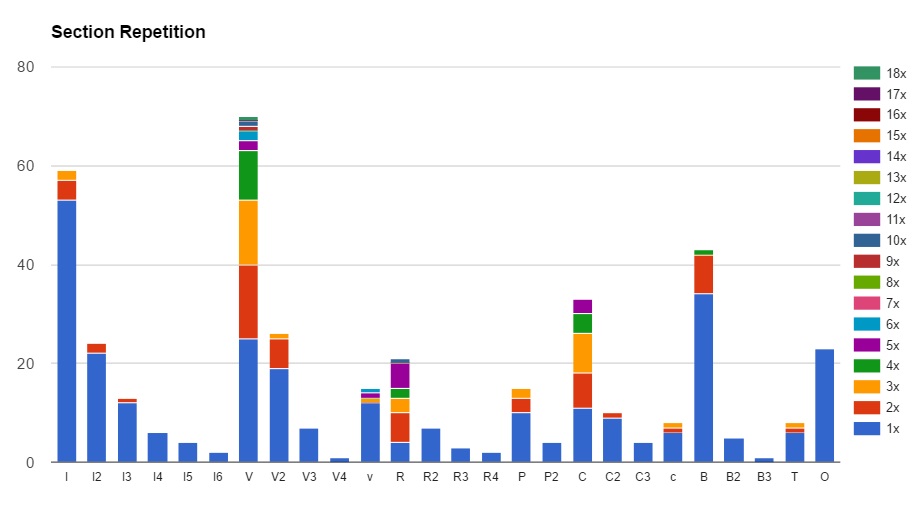
And here’s a graph that just proves people like to repeat verses, choruses, and refrains — which everyone already knew, but I mean, again, aren’t all the colors pretty?
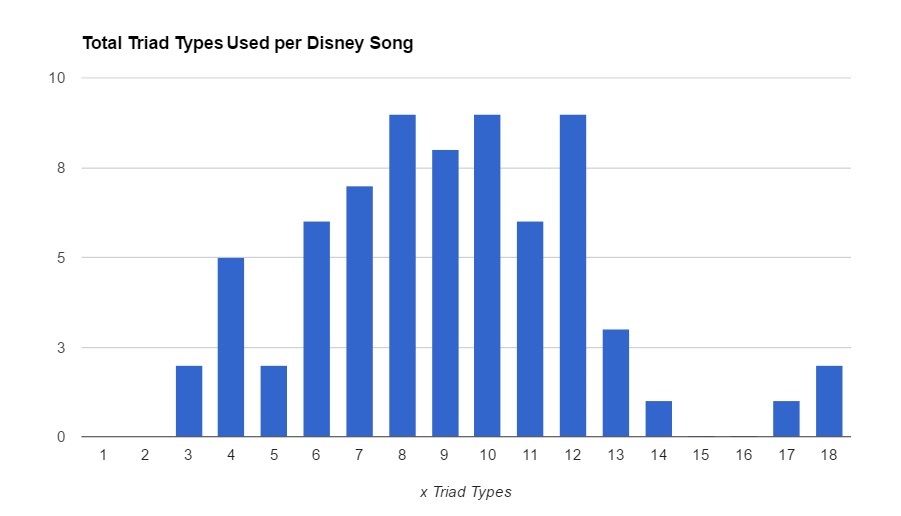
Last up, we have two charts with chord data (which I lumped and boiled down to just basic triads, not including modulations, and no doubles for inversions, extended tetrads/pentads/hexads, suspensions, or shiny crystal sequins either). The above graph represents number of chords per song. And like I alluded to at the beginning of this article, this is some pro songwriting right here. Most of these songs used more than 7 basic triads, and to put that into perspective, only 7 triads are even possible if you limit yourself to only the notes of a major scale! Borrowed chords, secondary dominant/leading chords, substitutions, common tone augmented/diminished — it’s bedlam out there.

Saving the best for last, here’s a graph of triad type usage trends. So (again, not including inversions, etc.), there are around 40 basic chords (triad types) you can play against the backdrop of a tonal center. I’ve color-coded them here by major (Ionian), minor (Aeolian), secondary dominant, augmented, diminished, and miscellaneous. And I could write thousands more words on this, but let me just sum up a few of my favorites, one from each colored section. To begin with, it’s the V (five major) chord, not the I (one major) chord, that was the overall winner, found in 97% of songs. Interesting.
As for the minor diatonics, it’s of note that the ♭VII (flat seven major) and iv (four minor) are the most common, which means that not only are they popular in their own tonality, but that other keys like to borrow them as well.
One thing I noticed about secondary dominants was that the VII (seven major), often functioning as a V/iii, is used second to least, and also that its secondary dominant target, the iii (three minor) chord, is also the second to least used chord amongst its diatonic friends. Quick, someone write a thesis!
The I+ (one augmented) chord and the III+ (three augmented) team of harmony notes were used in a tidy 10% of songs. Yet curiously, nobody used them after 1959 — that’s over 50 years ago. I guess they just went out of style.
Of the miscellaneous oddballs, I’d like to gawk a minute at the ♭v (flatted five minor), because of how it functioned frequently as a rare and refreshing secondary supertonic chord. “Secondary Supertonic” — look that up if you haven’t fallen down a rabbit hole in a while. Doesn’t this all just open up a whole new world of looking at these songs?!
Well, that’s it for tidbits, so what do you think? Based on this info, might there be a formula to writing the perfect “Disney” song?
Mmm, probably not. But there are, I think, a few rules that pop out: Be complex with your song crafting, but don’t let your complexity stick out as being complex. And above all, whatever the innards, make sure the song serves the story — sometimes in film that can mean more instrumental interludes than choruses!
If you’d like to dig deeper into these charts and the terminology I’m using to describe them, please visit my blog, where I unpack these stats even further over the course of several videos, and also where you can scroll through the full Google spreadsheet yourself. Here’s me digging a bit further into the data we just saw. Watch, if you dare!
Oh yeah, one more thing… “And they lived happily ever after!” The end.
Don’t stop here!
Continue learning with hundreds of lessons on songwriting, mixing, recording and production, composing, beat making, and more on Soundfly, with artist-led courses by Kimbra, Com Truise, Jlin, Ryan Lott, and the acclaimed Kiefer: Keys, Chords, & Beats.

